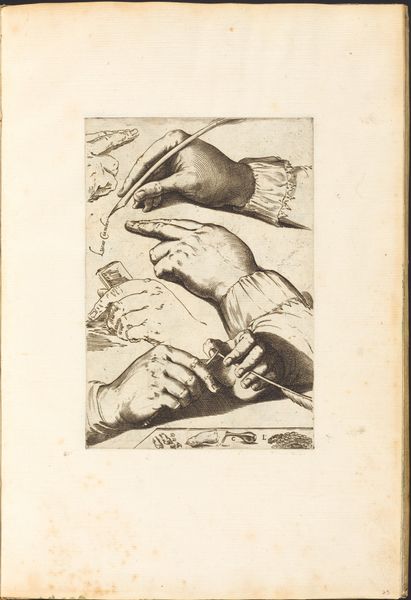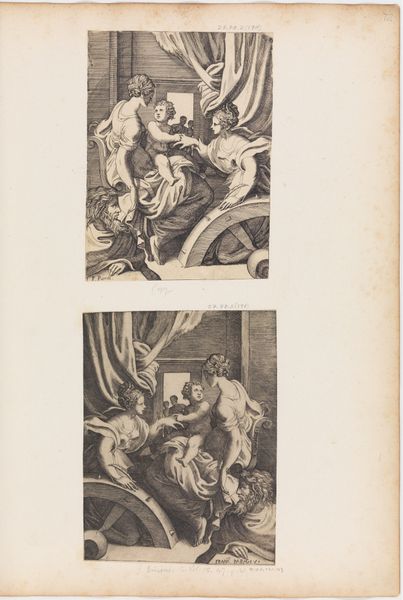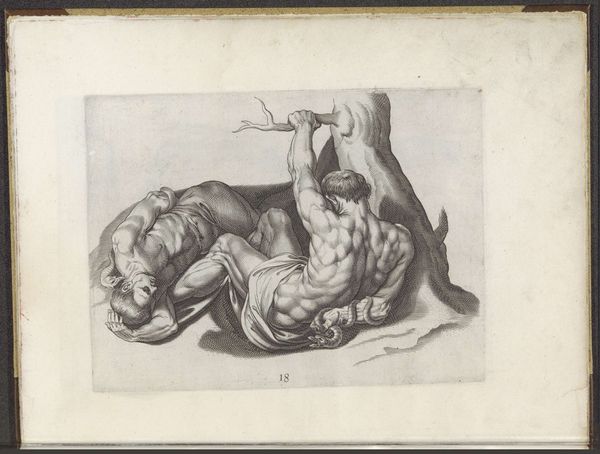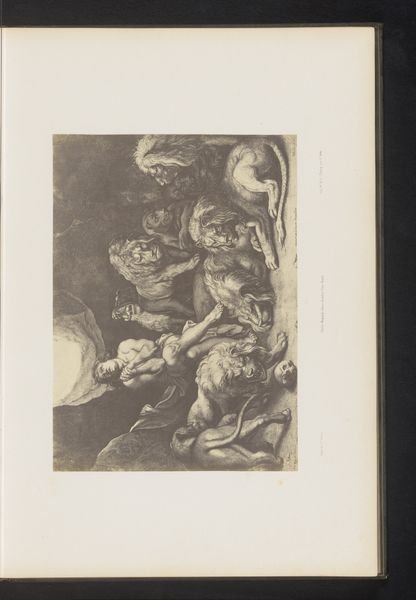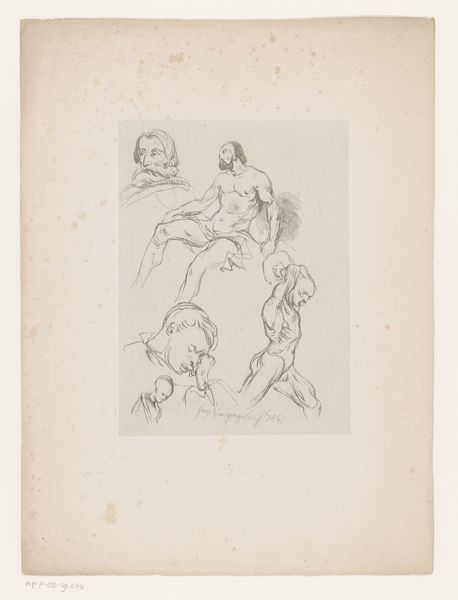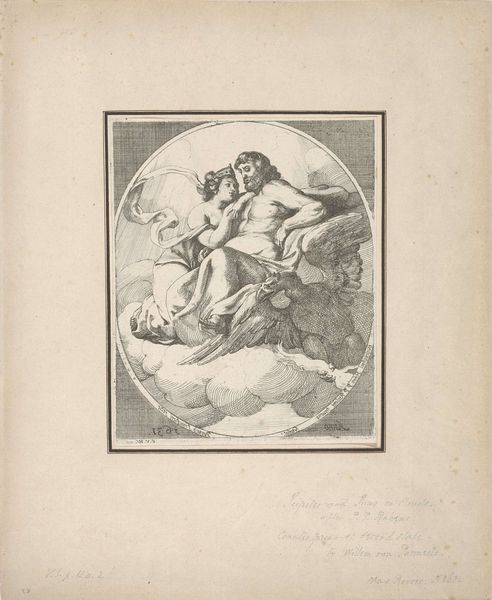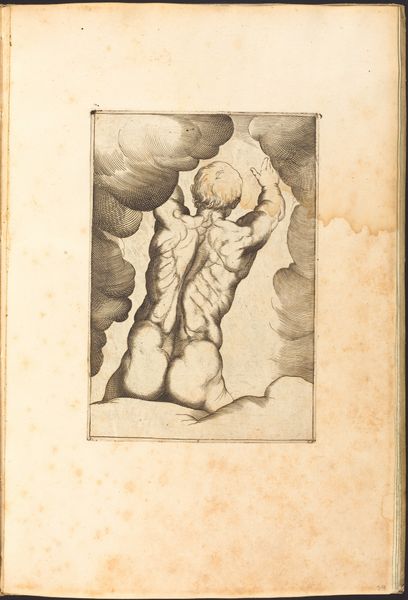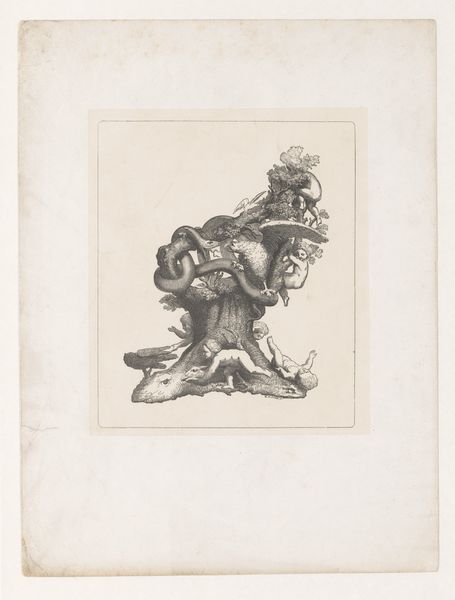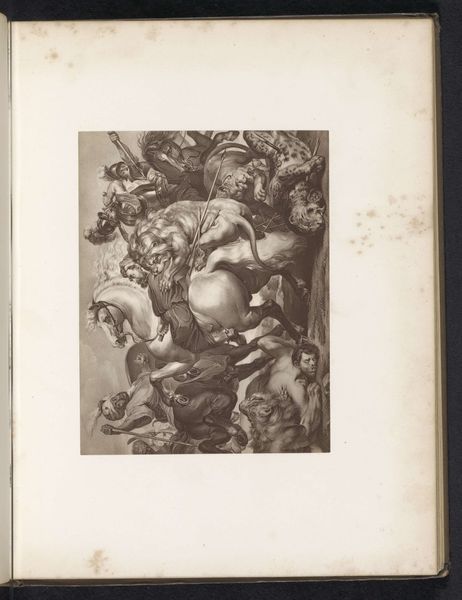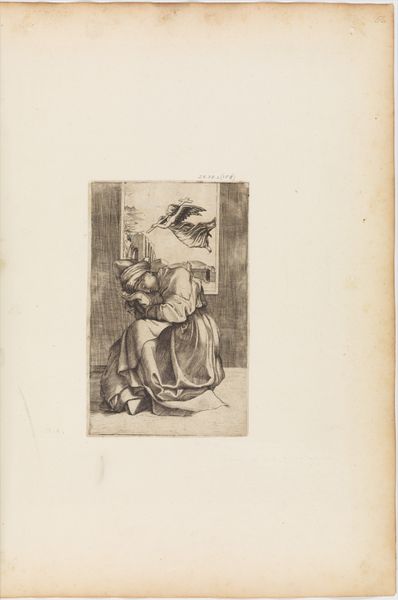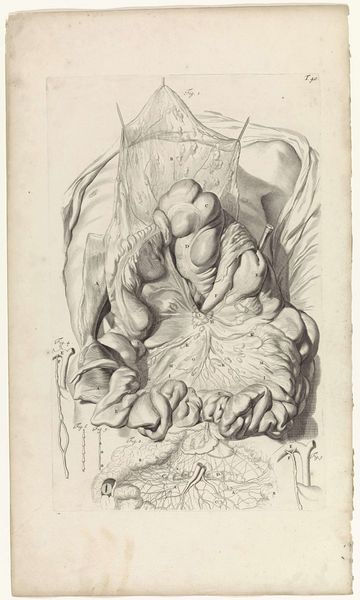
drawing, print, etching
#
drawing
# print
#
etching
#
11_renaissance
Copyright: National Gallery of Art: CC0 1.0
Curator: This work is titled "Print from Drawing Book," made by Luca Ciamberlano, circa 1610 to 1620. It is an etching, part of a larger bound collection. Editor: Immediately striking is the sheer study of gesture—the expressiveness captured simply through hands. They evoke a sense of labour and dexterity but also supplication, almost prayer. Curator: Absolutely, and considering Ciamberlano’s wider output of prints after classical sculptures, this deviates significantly. The labor becomes less about classical artistry, more about practical skills rendered through printmaking, suggesting a changing perception of labor and craft. What material processes informed its circulation? Editor: Well, the print medium itself makes it inherently democratic—a reproducible image allowing for wider distribution of knowledge and ideas than an original drawing would have. Considering the period, who had access to these ‘drawing books’? Was this intended for aspiring artists from less privileged backgrounds, democratising artistic training, or remaining within elite circles? Curator: A vital question. The texture itself tells a story; the etching technique lends a specific weight to the lines and shading – reproducible, yet demanding specific skilled labor. Consider too the economics. How might such prints empower craftspeople by disseminating pattern-making, facilitating workshops’ efficient output? Editor: Exactly! These hands, perhaps ordinary in themselves, represent potentially marginalized identities engaged in skill and labour during a specific era. Does Ciamberlano represent varied classes and backgrounds? The act of printing this book could disseminate more than just sketches; possibly unspoken class power dynamics, for better or for worse. Curator: And let’s not forget the paper itself; the materiality mediating both labor and dissemination. The cost, the availability... These things influenced who could learn and practice, ultimately molding a creative labor landscape. Editor: It highlights the constant negotiation of privilege. From the wealthy student recreating it in life, to the person struggling through a craft because their life demands they develop expertise—every print raises further crucial narratives that ask, Whose stories were included and celebrated, and whose remained unseen and unheard. Curator: That’s the beauty and the function here isn't it: that art’s existence creates continuous production both material and social? It is forever caught in this iterative cycle. Editor: Indeed, inviting an ethical reckoning for past blind spots, offering a deeper connection between observer, history, and artwork's endless ripple effects.
Comments
No comments
Be the first to comment and join the conversation on the ultimate creative platform.
